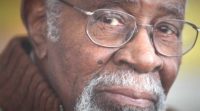In the film, teenager Casey (Britt Robertson) is transported to Tomorrowland whenever she touches a unique lapel pin. To make sense of where she goes and what she sees, Casey tracks down Frank (George Clooney), a former boy genius who seems to know a lot more about Tomorrowland than he cares to admit.
To create this fantasy world, director Brad Bird could have relied on computer trickery and green screens. But Bird wanted his actors to interact with as much reality as possible. So while there was a fair amount of digital magic used to build the way-out-there structures of Tomorrowland, its foundation rests on Calatrava’s work and its progressive spirit.
“The architect’s imagination represents that great optimistic version of life where you just go, ‘I want to build that’ and somebody builds it,” Clooney said. “It’s pretty amazing.”
The Saarinen-horseshoe-crab design of the City of Arts and Sciences — not to mention the World’s Fair-esque scale and aesthetic of the project — has a retro feel perfect for a movie based on a Disneyland theme park attraction that opened in 1955.
On a more fundamental level, though, the Tomorrowland-Calatrava connection is a natural one: the architect’s “optimistic vision of life” is very much in keeping with Walt Disney’s goals for Tomorrowland.
“A vista into a world of wondrous ideas, signifying man’s achievements,” Disney called Tomorrowland in his opening dedication. “Tomorrow offers new frontiers in science, adventure, and ideals: The Atomic Age, the challenge of outer space, and the hope for a peaceful and unified world.”
More than 50 years later, Calatrava espoused a similar sentiment in talking about his work with the New York Times.
“My goal is always to create something exceptional that enhances cities and enriches the lives of the people who live and work in them,” he said in 2013.
There’s another point of synergy between the film and architect, though not nearly as positive: they’re both financial boondoggles.
The City of Arts and Sciences ran massively over budget, coming it at more than 1 billion euros, four times the original cost estimate. Disney, meanwhile, spent $180 million making Tomorrowland (not to mention millions more on marketing) only to have the film open with an anemic $41.7 million at the box office.
No one ever said Imagineering came easy. Or cheap.








Post a comment to this article
Report Abusive Comment